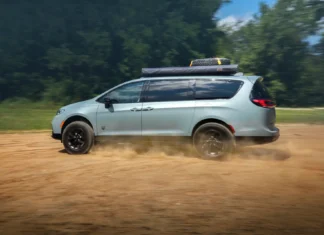For the first time in 9 years, Tesla’s annual sales fell, if only slightly.
Now that 2024 has officially come to a close, we’re getting our first look at sales figures across the industry. Tesla is one of the first companies out the gate to report its sales volumes before its January 29 earnings call. Even with an 2.3% bump in the fourth quarter thanks to zero-interest financing, free Supercharging (and the promise of better charging experiences this upcoming year) and lease deals, it wasn’t quite enough to keep the electric car maker from 1.1% lower global deliveries — the first time the company’s lost ground since 2015.
In the fourth quarter of 2024, Tesla reports it produced 459,445 vehicles across its lineup, including the Model 3, Model Y, Model S, Model X, Cybertruck and Semi, while delivering 495,570 vehicles. Of those, the clear front-runner (as usual) was the Model 3/Y, which accounted for 471,930 of those deliveries, or 95.23% of Tesla’s total sales volume.
Zooming out to the full-year numbers, Tesla build 1,773,443 vehicles — including 1,679,338 Model 3s and Model Ys — and delivered 1,786,226 vehicles. So, it is still selling what it makes and beyond, though average sale prices fell to just over $41,000 in the fourth quarter in order to make that happen. Tesla’s average transaction prices are also lower than they’ve been in the past four years, according to analytics firm FactSet.
There are a few different factors influencing Tesla’s sales. More competition in the EV space is putting pressure on the company and its aging lineup, notwithstanding the updated Tesla Model 3 Highland and Cybertruck. Chinese automakers, including BYD, are reporting massive sales gains, particularly in their domestic market, and automakers across the industry are viewing those firms as an existential threat as they sink billions into electrifying their lineups.
Here in the North American market, mainstream buyers are particularly skeptical of electric vehicles, resulting in a slowdown that disproportionately affects Tesla as the largest player in electric vehicles. Now that early adopters have made the plunge toward fully electric models, prospective buyers are reluctant to make the jump primarily due to concerns over range and charging infrastructure, as well as up-front cost, high insurance rates, battery pack degradation over time and, in extreme cases, battery fires.
2025’s political landscape and technological breakthroughs could also shape consumer’s buying behavior with EVs. Concerns are mounting over the fate of the $7,500 EV tax credit once the incoming Trump administration takes office, an incentive aimed at boosting electric car sales by partially offsetting the cost with taxpayer dollars. Tesla shareholders have also bet that government officials will relax regulations and potentially remove some guardrails concerning self-driving vehicles. That could work in the company’s favor, as it aims to bring out a fully autonomous robotaxi called the “Cybercab” in 2026. Depending on what actually comes to fruition, Tesla among other EV makers could face an uphill climb in 2025, or perhaps hit a technological stride as next-generation features like solid-state batteries, AI and self-driving capability come into play.

























